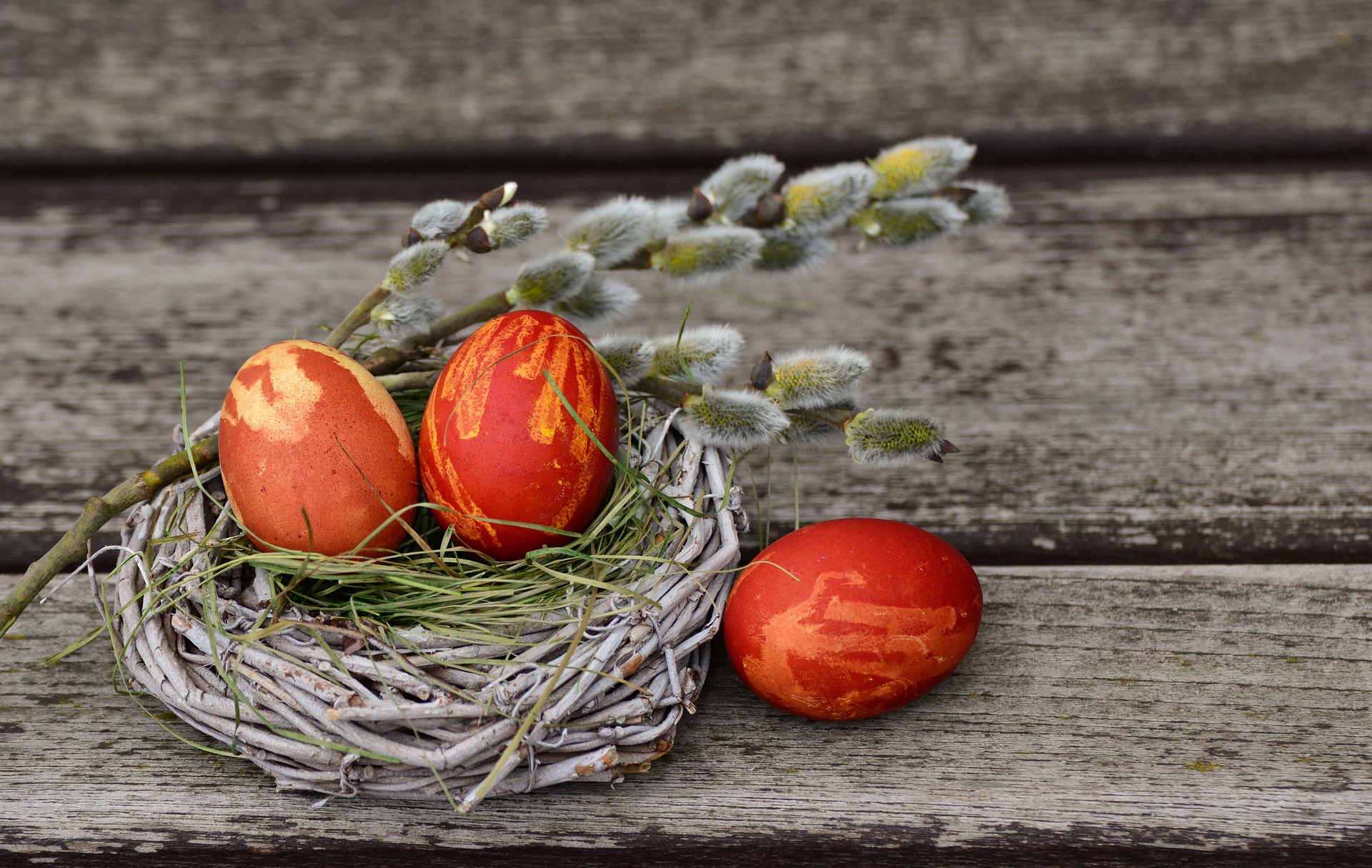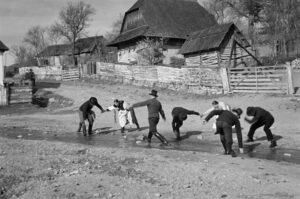
All traditional Easter foods, in several price categories, are available in market halls and shopping centers.Continue reading

During Easter Christian believers commemorate the crucifixion and resurrection of Jesus Christ, through which the promise of salvation was fulfilled. Since this act is the foundation of Christian faith, it is understandable that Easter is the most important, fundamental celebration in Christianity. It is therefore rightly called the “feast of feasts,” writes Rubicon.
Easter is one of Hungary’s oldest holidays, officially recognized as early as 1092 by the Synod of Szabolcs. Traditionally, it spans from Good Friday to Easter Monday, with Good Friday marking the crucifixion, Holy Saturday the preparation, and Easter Sunday the resurrection. While the days before Easter held mainly religious customs, Easter Monday brought more secular traditions.
Maundy Thursday and Good Friday were tied to purification, health, and winter-ending rituals. A widespread tradition, especially among children, was “Pilate beating,” blaming Pilate for Christ’s death. In the village of Csanádpalota, churchgoers struck pews during lamentation; elsewhere, children beat the ground or smashed boxes. In the community of Bakonybél, young men burned a straw effigy of Pilate, symbolizing winter’s end.
Good Friday commemorates Jesus Christ’s crucifixion and is the most important holiday in the tradition of the Reformed protestant church.
It is a strict fasting day—historically, people avoided meat, dairy, and eggs, with some eating only bread, water, or even just sunflower seeds. Catholic churches hold no Mass, only a “truncated” ceremony, and church bells remain silent. Believers visit the Holy Sepulchre and walk the Stations of the Cross. In 18th-century Pest (today half of Budapest), shops closed early, and people gathered at the Calvary for prayer and hymns.

Cardinal Péter Erdő, Holy Thursday, Chrism in St. Stephen’s Basilica; Photo: Wikipedia
The Holy Week or Good Friday passion play, a dramatic representation of Christ’s suffering, spread across many medieval European countries. In Hungary, examples date back to the Baroque period. The most notable were the Good Friday mystery plays performed by the Franciscans in Șumuleu Ciuc (Csíksomlyó) in the 18th century.
The young actors sometimes portrayed Christ’s suffering so convincingly that the stirred-up audience severely beat the actors playing Pilate and the soldiers who crucified Christ.
In the 17th–18th centuries, flagellant processions with cross-bearers emerged, the most notable being the Good Friday procession at the Church of Saint Anne in Buda’s Víziváros district. In the morning, flagellants led a veiled statue of Christ, followed by angel-costumed youths and locals. In the afternoon, a Buda citizen portrayed Christ and was violently mocked and beaten by peasants from Hidegkút playing henchmen. The procession ended with a crucifixion reenactment at today’s Batthyány Square. Due to their violent nature, church authorities eventually banned such events.

Easter procession; Photo: Fortepan / Vimola Károly
Holy Saturday symbolizes waiting and preparation for the resurrection—a time when “life sleeps, and hell trembles.” Early Christians, expecting Christ’s return, saw it as a hopeful vigil.
Today, the Easter Vigil and resurrection procession remain the most attended events among Hungarian Catholics.
The fire blessing ceremony, rich in symbolism—death, resurrection, purification, light, and Christ’s teachings—is central. Traditionally, people relit their home hearths with embers from the blessed fire, as the home fire was extinguished on Good Friday.
Sunday began in the spirit of resurrection: from Szeklerland (in today’s Romania) to Šahy (Ipolyság, Slovakia), many communities set out on Saturday night to “search for Jesus” in the village outskirts, similar to the women who visited the tomb in the Bible. They typically visited crosses around the village until they found a hidden statue of Christ and triumphantly carried it to the church at dawn.

Waiting for food blessing; Photo: Fortepan / Bencze László
A characteristic and still-practiced Easter Sunday ritual is food blessing. Worshippers usually bring their Easter food to church in baskets covered with cloth. These baskets – with regional variations – generally contain ham, eggs, scone, possibly lamb meat, horseradish, curd cheese, and salt. The blessed food is then eaten at home, and the leftovers are not thrown away: in many regions, the ham bone is hung on fruit trees, and eggshells are plowed into the soil for a better harvest.
Easter Monday, or as it is known in many places, “Water-Dousing Monday,” was for centuries a day of visiting and sprinkling in Hungary.
In his 1757 book, Péter Bod described Easter Monday sprinkling as a long-standing Hungarian tradition, where people humorously doused each other with water. While Christians link it to baptism, legends also suggest it recalls guards silencing or reviving women at Jesus’s tomb. Ethnographers see it as a cleansing, life-giving ritual, possibly symbolizing fertility, as hinted by the tradition’s sometimes erotic elements and verses.

Easter sprinkling in Hungary; Photo: Fortepan / Horváth József
On Monday morning, young men would roam from house to house where girls lived, taking them to the well and dousing their “victims” with a bucket of water. The girls were both eager for and afraid of being sprinkled—many fled, and the young men often had to chase them down to succeed. Despite the playful cheerfulness of the tradition, it may seem rough by today’s standards and was not without risks. In some areas, girls could get revenge on Tuesday by sprinkling the boys.
The girls usually gave red or painted eggs in return for being sprinkled, but in many places, the red egg served as a way to buy themselves out of being doused. Sprinklers were also expected to be hosted – with Easter cake, ham, and wine. The morning and mid-morning sprinkling was followed by dancing.
From the 19th century, the wildness of the custom began to soften; first in cities, then also in villages, scented rosewater or cologne replaced plain water.
For decades, along with New Year’s Eve, Easter Monday was one of the days when ambulances had to transport the most people to hospitals due to alcohol poisoning. Eventually, the situation improved, though in the 21st century the custom of sprinkling has also started to fade.
Via Rubicon; Featured picture: Fortepan / Horváth József